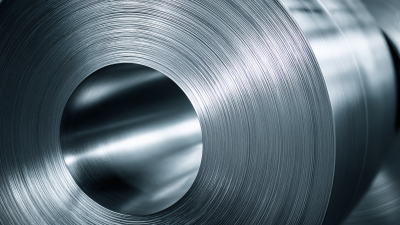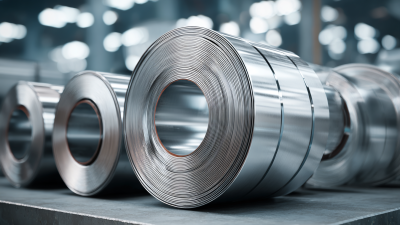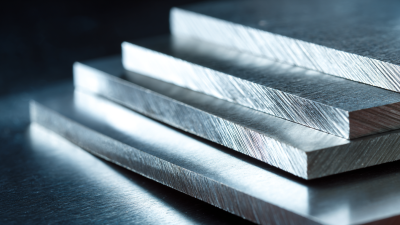The remarkable versatility of 316 stainless steel properties makes it a cornerstone in various modern industrial applications. Renowned for its superior corrosion resistance, particularly in chloride environments, this alloy is increasingly favored in sectors such as marine, chemical processing, and medical industries. According to a report by the International Stainless Steel Forum (ISSF), approximately 12% of the global stainless steel production consists of austenitic grades like 316, reflecting its widespread adoption. The unique composition, which includes molybdenum, enhances its resistance to pitting and crevice corrosion, thus extending its lifespan even in harsh conditions.

Furthermore, market analysis indicates that the demand for 316 stainless steel is expected to grow significantly, driven by advancements in technology and the need for durable materials. This introduction explores the essential properties that make 316 stainless steel a material of choice across diverse applications, shedding light on its critical role in modern engineering and manufacturing.
316 stainless steel is renowned for its exceptional corrosion resistance, making it a key material in a variety of modern applications. This alloy is particularly effective in environments that expose it to harsh chemicals, marine atmospheres, and high temperatures. The inclusion of molybdenum in its composition enhances its resistance to pitting and crevice corrosion, which is crucial for industries like food processing, pharmaceuticals, and marine applications.
When selecting 316 stainless steel for specific uses, it's essential to consider the environment in which the material will be utilized. For instance, while 316 exhibits excellent resistance to chloride-induced corrosion, it may still require protective coatings in highly aggressive environments. Additionally, regular maintenance can significantly extend the lifespan of stainless steel components, ensuring they remain effective under challenging conditions.
Tips: Always choose the right grade of stainless steel for your environment. Regularly inspect and clean the surfaces to prevent corrosion buildup, and consider applying a suitable protective coating to enhance longevity in abrasive settings. Remember, environmental factors such as humidity, temperature, and exposure to chemicals can greatly influence corrosion resistance.
316 stainless steel is widely acclaimed for its exceptional thermal stability and conductivity, making it an ideal choice for various modern applications, particularly in environments prone to extreme temperatures. According to a report by the International Stainless Steel Forum (ISSF), 316 stainless steel exhibits a thermal conductivity of approximately 16.2 W/m·K at room temperature. This property is vital for industries requiring materials that can maintain performance under fluctuating thermal conditions, such as chemical processing, marine applications, and food production.
The thermal stability of 316 stainless steel is further enhanced by its composition, which includes molybdenum, providing better resistance to pitting and crevice corrosion. A study published in the Journal of Materials Science highlights that the material can withstand temperatures up to 870°C (1600°F) in intermittent service and can be used in continuous service up to 925°C (1700°F). Such resilience ensures that structures and components made from 316 stainless steel maintain integrity and safety in high-temperature environments while minimizing the risk of failure, thereby enhancing overall operational efficiency in demanding applications.
The mechanical strength and ductility of 316 stainless steel make it a favored choice for structural applications across various industries. With a tensile strength of approximately 570 MPa, 316 stainless steel exhibits excellent resistance to deformation under load. This property is crucial in structural environments where stress and strain are prevalent. Its robust nature ensures that it can withstand heavy loads without succumbing to failure, making it ideal for components in construction, marine, and chemical processing industries.
Moreover, the ductility of 316 stainless steel allows it to be formed and shaped without cracking, which is vital during the fabrication process. Ductility is measured by the material's ability to elongate plastically before fracture, and 316 stainless steel typically shows elongation values around 40% in standard conditions. This attribute not only facilitates complex designs but also enhances the material's performance in dynamic and fluctuating loads. Thus, engineers and architects often rely on 316 stainless steel, confident in its ability to maintain structural integrity while offering flexibility in design.
The manufacturing of 316 stainless steel components involves several key processes that enhance its properties, making it ideal for various modern applications. One of the primary methods is cold working, which significantly increases the strength and hardness of the material through deformation at room temperature. According to the Stainless Steel Council, the tensile strength of 316 can increase by up to 20% through this process, making it suitable for high-stress environments, particularly in the chemical and marine industries.

Another essential manufacturing process is welding. Due to its composition, 316 stainless steel exhibits excellent weldability, particularly when utilizing techniques such as TIG (Tungsten Inert Gas) welding. Research from the International Journal of Advanced Manufacturing Technology indicates that welding with proper techniques can maintain the integrity of the metal, resulting in welds that are often stronger than the base material itself.
Tips: When working with 316 stainless steel, be sure to select the appropriate filler materials to prevent issues like corrosion that can arise in harsh environments. Additionally, maintaining optimal temperatures during welding is crucial to preserve the steel’s corrosion resistance.
When evaluating the cost-effectiveness of 316 stainless steel in modern industries, it becomes evident that this alloy's unique properties play a crucial role in justifying its price. According to a recent report by the International Stainless Steel Forum (ISSF), 316 stainless steel offers excellent corrosion resistance, particularly against chlorides, making it an essential choice for marine and chemical environments. While the initial investment in 316 stainless steel may be higher—about 10-20% more than 304 stainless steel—the long-term benefits in durability and reduced maintenance costs often offset this premium.
Manufacturers in sectors like pharmaceuticals and food processing have reported a drop in lifecycle costs by up to 30% when utilizing 316 stainless steel due to its lower corrosion rate and increased longevity. Utilizing this material reduces replacements and downtime, allowing companies to allocate resources more efficiently.
**Tips**: When considering materials for specific applications, always analyze the total cost of ownership, not just the upfront cost. Moreover, consult with suppliers about long-term savings associated with maintenance and durability to make informed choices that align with operational budgets.







To learn more about any of the products and services provided by Abbott Ball Company, Inc., simply complete the form below.